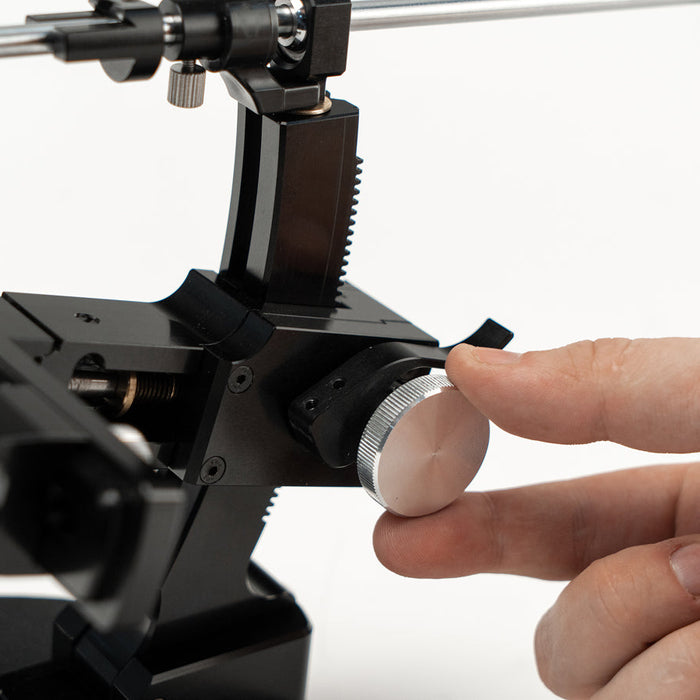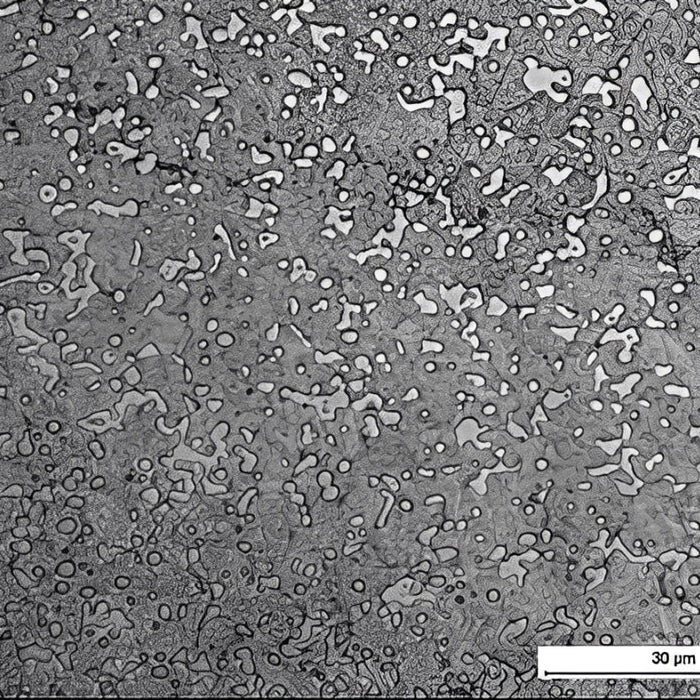Although the carbon knife steel is subject to corrosion, rust rarely appears on the blade. A rusty patina develops if the knife has been stored in a kitchen drawer for a long time, is used only during hunting or mushroom season, or has been left lying outside since last summer.
How to restore a rusty kitchen knife? If you find rust, you do not have to throw away a good tool, even if it is old. With some effort, you can restore it to its original look. It is not a difficult process, and as a reward for your labour, you will get a sharp knife that will serve for decades to come.
1. Chemical properties of iron oxide
Corrosion of carbon steel, which leads to rust, is the oxidation of iron (Fe) with oxygen from the air. To neutralise this process, you will need to use acids. Therefore, you should give preference to acid-containing substances when choosing a suitable product.
The choice of the cleaning ways depends on how badly the knife is infected. A barely visible red patina can be dealt with an ordinary cloth. However, if a pocket knife has been lying outside all winter or has not been used for several years, you may have to use abrasives or power tools.
2. Natural solvents and household restoring solutions
Before removing the rust from the blade, you must get rid of other contaminants that may be on the kitchen knife: dust, soil, decayed food particles, oils and lubricants.
How to clean the knife:
- Rinse the blade under a tap water or in a container;
- Wipe off any fingerprints from the knife, which usually contain grease and salts;
- Remove any remaining water and thoroughly dry the handle and the gap between it and the metal part;
- Wipe the knife with a soft, clean rag.
Do not apply too much force to get rid of the rust at this stage. Doing so may damage the metal. It is better to use one of the household kitchen products.
2.1. Vinegar
The first step is to place the corroded tool in vinegar. It is a 9% solution of acetic acid, which removes traces of corrosion. You need to soak a piece of cloth in vinegar, and then wrap it around the blade. This way, you can avoid damaging the handle.
After the rust is dissolved, rinse the knife with water and dry it with a cloth or a tissue.
2.2. Lemon juice and salt
Lemon juice is another solvent for iron hydroxide. You can use it pure or together with salt.
How to remove the rust with lemon juice:
- Put salt on the corroded parts of the knife.
- Wipe the surface of the instrument with a rag soaked in lemon juice.
- Rinse the knife under the tap to remove any residual cleaning agents.
Do not leave lemon juice on the blade for a long time. It will leave marks on the surface and damage the tool.

2.3. Baking soda
Another way to fight rust is with baking soda. It works less effectively, so it may take a few tries to remove the corrosion. The good thing about this option is that baking soda can be found in every household kitchen.
Before using, add a little water to the baking soda to make a paste. Apply it to the blade and leave the knife for 2-3 hours.
Then you can clean the surface with a metal or plastic sponge (brush). To finish, rinse off any residual soda and rust and wipe the knife with a dry cloth to remove any residual water.

2.4. Potatoes
Potatoes contain substances that can help neutralise rust. Sometimes the potato, or to be more precise - the acid in it, helps to achieve the desired result. You just need to stick a knife into the potato body and wait a couple or three hours. After removing the corrosion, you need to rinse it and dry it with a rag.
Note that you should not eat the tubers used for the cleaning. They may contain particles of oxidised iron.
2.5. Dishwashing detergents
Dishwashing detergents help to solve the problem if they are mixed with vinegar. Both components have to be added in equal parts. Clean the blade using a moistened cloth.
If the corrosion started a long time ago, you can soak the tool for an hour and a half. After that you just need to rinse it and wipe it with a cloth.
3. Abrasive cleaning methods
In case of severe damage, vegetable acid alone will not be sufficient. You will have to use mechanical methods. The easiest and most accessible is with using a toothbrush. To do this, put a few detergent drops on the brush and rub the damaged area with it. This way you can remove rust that is located in hard-to-reach places. For example, near the handle or in the threads on the blade.
A melamine sponge has a similar effect. The porous polymer scrubs off oxidised iron and returns the knife to its original gloss. It can be used dry.
A sandpaper is a more serious tool. But you should resort to such drastic measures only as a last resort. Yellow stains can be removed from a dry knife or from a knife surface moistened with water.
Electric tools are the most effective method. You can use a screwdriver or a drill with a grinding wheel attached for this purpose.
Follow these tips when using these devices:
- do not sand the knife without lubricants;
- A brass wire cord brush can be used as a sanding attachment;
- It is better to use a vise or a similar device for secure holding;
- You can give the final shine with a felt attachment and a polishing paste.
Proceed carefully, moving the tool in short strokes. Careless behaviour can damage the steel and make the knife unusable.
4. Chemical solvents
Another way to clean a rusty knife is to use a chemical solvent. You can get it in a hardware store.
4.1. Lubricating oil
Small rust spots can be removed with universal compounds like WD-40. Their advantage is that they do not damage the metal and do not stain it. After treatment you can easily remove the residues of these products with water or a rag.
It is best to apply the lubricant in a thin layer and then wipe it off with a cloth. If you apply too much WD-40, dust and dirt will stick to the surface.
How to remove rust with a lubricant:
- apply lubricant to the infected area;
- wait for the compound to soak in (it is better to wait two or three days);
- remove corrosion marks with the tip of a screwdriver or another tool.
Be careful to avoid leaving ugly scratches.
4.2. Rust converters
Hardware stores also sell non-toxic solutions for iron hydroxide removal. Such products come from AVS, KERRY. They are effective enough to remove rust, but not so strong as to damage the blade or cause harm to health.
To remove rust, you need to place the blade in a jar with such a solvent. It can be kept in the container for up to half an hour, after which the residues of the substance have to be washed off with water. At the end, wipe the tool with a cloth or a paper towel.

4.3. Organic solvents
You should use them if the rust covers almost the entire knife surface and has penetrated deeply into the metal. They also help to get rid of calcium and lime stains. However, they are toxic and you have to strictly observe the safety precautions specified by the manufacturer when using them.
How to clean the knife with an organic solvent:
- Mix solvent and water in equal parts and place the knife blade in this solution. Ensure that the liquid does not touch the handle. Otherwise it can get damaged. Organic compounds will damage handles made of plastic, bone, wood and stone.
- After 2 minutes, remove the knife and rinse the blade with water. Do not leave the knife in this solution any longer as the solvent may damage the structure of the blade.
- If rust remains on the knife, you can apply a few drops of the compound not mixed with water on it. Afterwards, rinse it off with water as soon as possible.
It is better to clean the blade outdoors or in a well-ventilated room. Never mix it with other products to avoid a dangerous chemical reaction. Ignoring these rules may result in chemical burns or toxic vapours poisoning.
5. Preventing corrosion
To avoid rusting of the knife, it is enough to use it frequently for its intended purpose. When you cut something with a knife, its steel surface is constantly cleaned, the knife blade is washed and dried according to the manufacturer's recommendations. There is a risk of corrosion if the tool is just stored in a kitchen drawer or on a shelf.
Lack of attention from the owner will sooner or later lead to oxidation of the blade. Even if the tool is stored in a dry place. This is due to the constant presence of water vapour and oxygen in the air. The water condenses on the blade and causes corrosion.
Applying oil is an excellent option. It forms a protective layer on the blade, which has hydrophobic properties. Therefore, water will not come into contact with the iron and will not cause oxide formation.
However, some owners of expensive knives refuse to use oil because of the possible negative effect of its components on the metal. You can use wax instead of oil. People often use it for expensive hunting or professional chef's knives.
It is also not recommended to store penknives, pocket knives and hunting knives in sheaths or scabbards. The close contact of the surfaces with each other makes the situation worse. Oxidation by moisture occurs even faster. Natural leather has the most negative effect, as it can absorb moisture itself.
The best way to store tools is with using fabric chef rolls or in kitchen drawers with compartments.
Blade condition should be monitored most closely in high humidity areas. This includes tools used on yachts and other vessels. Salt in the air adds to the metal's deterioration. It can even cause oxidation of tools made of stainless steel. If the stainless steel blade becomes dark, you have clean it to prevent corrosion.
Conclusion
A quality knife will not rust during its entire service life if you follow the handling rules. The more expensive the tool, the longer it keeps its properties and initial appearance. Thoroughly choose the knife properties, especially if you need it for professional purposes. However, if the knife gets rusty, do not throw it away, even if it is old, as there are many restoration methods.
Do not forget about the knife sharpening. It is important to choose the right abrasive stones and maintain the same sharpening angle. It is best to use special devices and sharpeners for this purpose.







